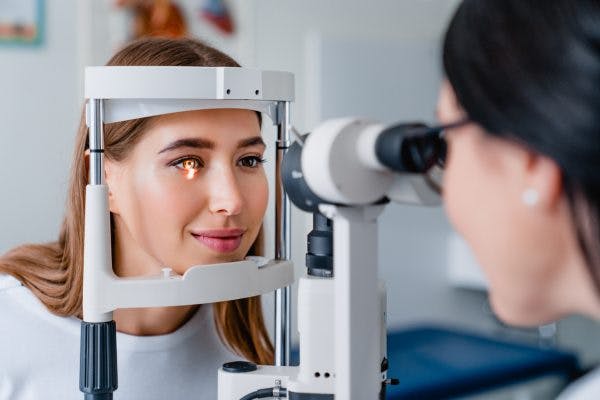Excessive sweating after a head injury is a symptom of dysautonomia. This condition causes automatic bodily functions, such as sweating, to malfunction. Although there are many ways a head injury may impact your autonomic nervous system, this post will explore how dysautonomia causes increased sweating after head injury plus the best ways to manage it.
Dysautonomia and Sweating
Dysautonomia refers to problems in the autonomic nervous system. The autonomic nervous system is a complex neural network involving the amygdala, hypothalamus, and brain stem, among other areas. It controls all involuntary bodily functions, such as:
- Blood vessel dilation or constriction
- Heart rate
- Blood pressure
- Digestion
- Adrenal gland function
- Thermoregulation (regulating body temp)
If a brain injury damages the structures that control these functions, dysautonomia will occur. This can lead to various problems, including excess sweating after head injury.
Causes of Sweating After Head Injury
The part of the brain most responsible for regulating body temperature is the hypothalamus. This structure contains heat-sensitive neurons that signal to the hypothalamus whether the body is too hot or too cold.
If the hypothalamus detects excess heat, it will trigger the body’s cooling measures. These cooling responses include:
- Activating sweat glands
- Increasing water retention
- Dilating blood vessels
When the hypothalamus is damaged, this process no longer works properly, which can cause the hypothalamus to think the body is overheating when it is not. When certain parts of the body start sweating more than they should, doctors call this hyperhidrosis.
Other causes of hyperhidrosis include thyroid dysfunction and anxiety disorders. Some medications such as propranolol for high blood pressure can also trigger increased sweating.
Symptoms of Hyperhidrosis
Signs of hyperhidrosis include:
- Clammy or wet hands and feet
- Frequent sweating
- Sweat that soaks through clothing
People with hyperhidrosis can also experience certain side effects as a result of their sweating, such as:
- Irritating skin problems
- Anxiety
- Reluctance to make physical contact
- Self-consciousness and depression
Fortunately, excessive sweating can be effectively treated
Treating Excessive Sweating After Head Injury
There are several ways to manage sweating after head injury. Some of these treatments are as simple as changing your daily habits, while others require the help of a doctor.
Antiperspirants
While deodorants do not stop sweating, antiperspirants do. If your condition is not too severe, using an antiperspirant spray might be enough to keep your sweating under control.
There are prescription-strength antiperspirants that contain aluminum chloride, which plug the sweat glands. Ask your doctor if prescription antiperspirants are safe for you.
Clothing changes
Sometimes simply changing your clothing material is enough to manage your sweating. Some changes you can make include:
- Armpit shields. These pads worn under the armpit prevent sweat from soaking the shirt. While they won’t reduce perspiration, they may keep you from changing shirts.
- Loose clothing. Synthetic materials such as nylon can worsen symptoms. Try wearing loose, breathable materials including cotton and linen.
- Thick socks. To prevent sweat from ruining your shoes, wear thick, soft socks made of natural materials like cotton and wool. These are better at absorbing moisture.
If these ideas are not powerful enough to address your sweating after head injury, you may need more intensive treatments.
Iontophoresis
Iontophoresis, a technique to deliver ionic compounds across the skin into your body with mild electrical currents in combination with water has been effective in shutting down the sweat glands in the hands and feet. While your hands or feet are submerged in water, a current passes through the water into the skin, disabling the sweat glands.
Doctors have used iontophoresis to treat hyperhidrosis since the 1950s. For people with extreme sweating on the hands, it is especially effective, with one study showing that it reduced perspiration by 92 percent.
There are no significant side effects to iontophoresis, and the benefits are sustained as long as you keep up the maintenance schedule (usually once per week).
If sweating after head injury affects other body parts besides your hands and feet, your doctor can prescribe pads to allow the current to reach those areas. Iontophoresis is recommended for people who have already tried prescription antiperspirants and need something stronger.
Botox Injections
Botox is another treatment for excessive sweating after a head injury. The natural protein found in Botox blocks the sweat glands from its overactive production. By doing this, Botox effectively shuts down sweating in the area where it is injected. Botox’s effects can take up to two weeks to fully appear but will last between four to twelve months.
Studies have shown that Botox can result in an 87 percent decrease in underarm sweating and a 90 percent decrease in palm sweating. It also does not cause compensatory sweating in other body parts, unlike some other treatments. All this makes Botox one of the best treatments for hyperhidrosis. It is however a more expensive treatment.
Medications
Besides Botox and iontophoresis, there are some oral medications that can help patients manage excess sweating. These medications are best suited for patients who have generalized hyperhidrosis i.e. excessive sweating over their entire body.
The most common medications used to treat hyperhidrosis include:
- Anticholinergics
- Beta-blockers
- Benzodiazepines
However, unlike the other treatments listed, these medications can have serious side effects. Therefore, make sure you consult with your doctor before starting any of them.
How to Manage Excessive Sweating After Brain Injury
Sweating after a head injury is a frustrating condition that many people experience. However, it is treatable. Too often, patients will endure increased sweating for years before seeking help. But there is no need to wait.
You can start seeing improvements as soon as you begin treatment. We hope this article helps you find the best ways to manage your sweating after brain injury.









